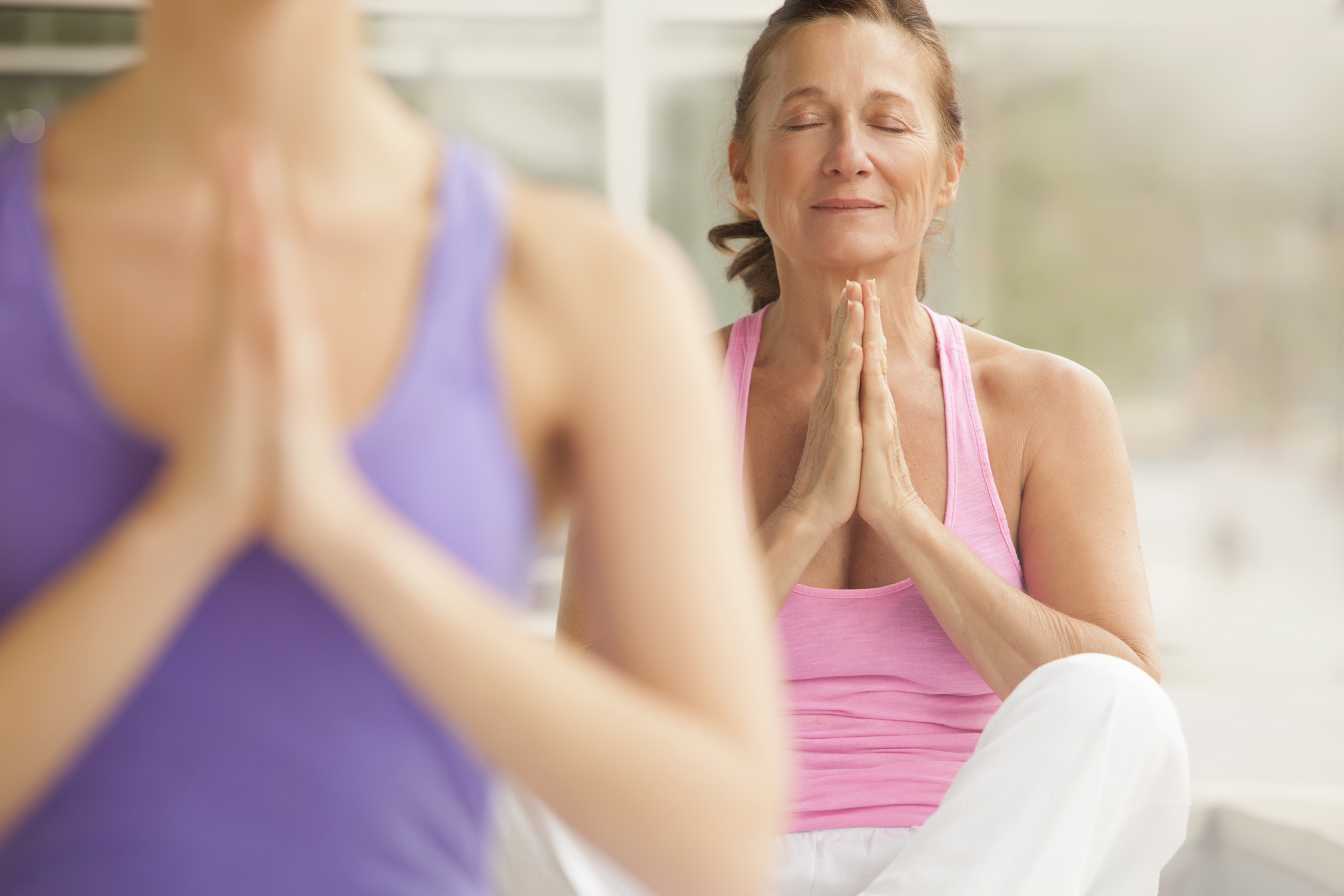
A holistic health practitioner once told me: “The body is designed to heal.” I found her words very comforting. In yogic terms, the body’s dharma, or purpose, is to repair itself so it can remain a healthy vehicle for the soul. We may feel particularly vulnerable right now due to widespread illness, but we can support the body’s healing abilities with yoga.
Home Yoga Practice For Respiratory Wellness
In response to the coronavirus pandemic, here is a home practice that promotes respiratory wellness by exercising the lungs, opening the chest, and improving posture.
1. Three Part Breath and Alternate Nostril Breathing
With repeated practice Three Part Breath (Dīrgha Prāṇāyāma) teaches us to use our full lung capacity. Sit in Easy Pose (Sukhāsana) with your hips elevated on a block or blanket. Place one hand on your abdomen and one on your heart to feel the rhythm of your breath. Inhale deeply from your belly, send the breath up through your rib cage, and then into your chest until your lungs are full. Exhale from your chest, deflate your ribs, and draw your navel back towards your spine to completely empty your lungs.
Alternate Nostril Breathing (Nāḍī Śodhana Prāṇāyāma) purifies the nāḍīs, which are channels for energy flow in the body, and it’s very calming. Place the pointer and middle fingers of your dominant hand on the bridge of your nose or curled into your palm. Inhale fully through both nostrils. If you’re right handed, press your right nostril closed with your thumb and exhale through your left nostril. With your right nostril blocked, inhale fully through your left. Close your left nostril with your ring finger. Then release your thumb and exhale out your right nostril. With your left nostril blocked, inhale fully through your right. Close your right nostril and then exhale out your left. If breathing through the nose is difficult due to sinus congestion, practice Three Part Breath through the mouth and avoid Alternate Nostril Breathing until the airways clear. Take long, full breaths for the remainder of the practice.
2. Bound Angle Pose
Bound Angle Pose (Baddha Koṇāsana) opens the abdomen for deep breathing. Sit upright and bring the soles of your feet together in front of you with your knees wide. Place a prop under each knee for support. Inhale from below your navel and fill your lungs completely. Take several rounds of deep breaths in this posture.
3. Locust Pose
Locust Pose (Śalabhāsana) improves our posture which promotes lung efficiency. Lay face down and interlace your hands behind your back, drawing them towards your feet. Bring your feet together, and on an inhale, lift your feet and chest off the mat. Press your hips down as you stretch from your waist, opening your chest from below your shoulder blades, rather than bending at your lumbar spine. Incorporate this pose into a few rounds of Classical Sun Salutations (Classical Sūrya Namaskar). Practice it in place of Cobra Pose (Bhujaṅgāsana). Classical Sun Salutations prepare the body for other āsanas by loosening the shoulders and hips.
4. Cow Face Pose
Cow Face Pose (Gomukhāsana) opens the chest and shoulders. Start on your hands and knees. Cross your left shin over your right calf behind you. Sit upright so your right knee stacks on top of your left and your feet land by your sides. Alternatively, practice the upper body portion of this pose in a comfortable seated position. Reach your right arm out to the side and bring your right hand to your low back, palm facing out. Extend your left hand to the ceiling, bend the elbow and reach your left hand down your back. Gently move your hands towards each other along your spine until your fingers clasp. If your hands don’t meet, don’t force it. Hold the ends of a towel or piece of clothing to bridge the gap between your hands. Repeat on the opposite side.
5. Bridge Pose
Bridge Pose (Setu Bandhāsana) opens the chest while strengthening the lower back and legs. In a reclined position, lift your hips off the mat, position your feet under your knees, and relax your arms by your sides. For support, position a block under your sacrum (triangular bone at the base of your spine). Send nourishing prāṇa into the heart-space with Three Part Breath.
6. Corpse Pose
Conclude in Corpse Pose (Śavāsana) or in another restful posture like supported Reclining Bound Angle Pose (Supta Baddha Koṇāsana). Cease breath control and relax the body. Withdraw your senses from the external world and focus on the natural rhythm of your inhales and exhales. Meditate on an affirmation like The body is designed to heal or My body is the home of my spirit. Your own inner wisdom may surface during this relaxation period




